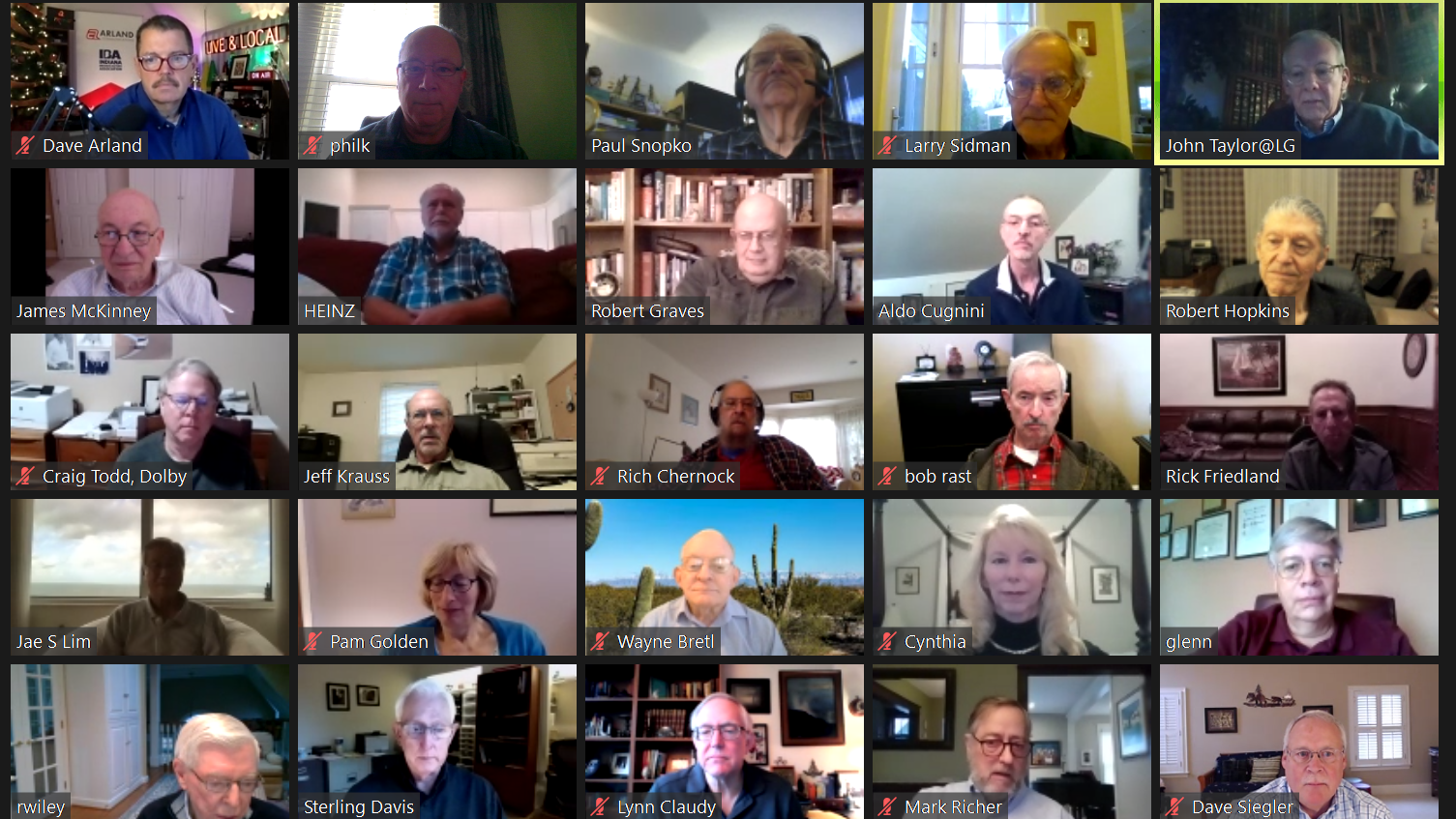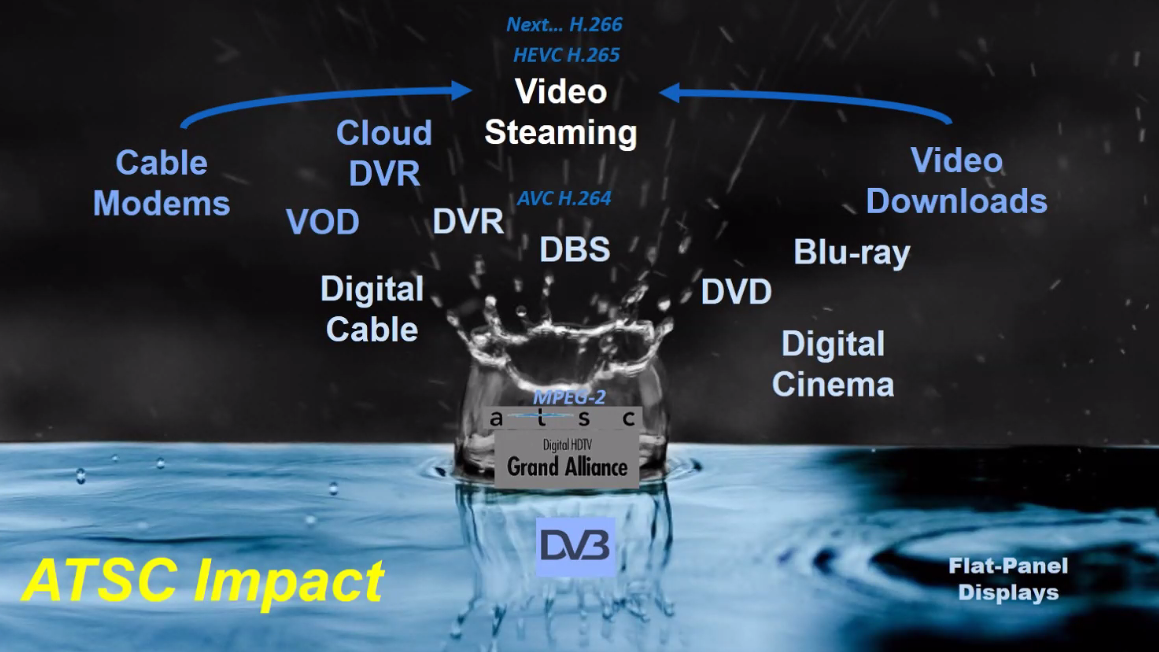
WASHINGTON—A group of about 40 digital HDTV pioneers gathered online Nov. 30 to celebrate the 25th anniversary of a vote by the FCC Advisory Committee on Advanced Television Service that ushered in high definition television.
Among the HDTV luminaries appearing on the Zoom celebration was former FCC Chairman Richard Wiley, who later chaired the advisory committee and is credited with convincing the organizations working on HDTV systems to compromise and agree on incorporating the best elements of each system into what would become the world’s first digital high definition television standard.
Those organizations, which together formed the Grand Alliance, included AT&T, General Instrument, Massachusetts Institute of Technology, Philips Consumer Electronics, David Sarnoff Research Center, Thomson Consumer Electronics and Zenith Electronics. Key players from many of these organizations participated in the online celebration.
Wiley began his remarks by recognizing the people who participated in the meeting to recommend a new digital HDTV transmission system to the FCC and those who worked on its development. They are “the real heroes” of making HDTV happen in the United States, he said.
Recalling early opposition from some in government, business and “the wise savants in the television field” to digital HDTV, Wiley expressed gratitude to those who “just continued to plod along and do your work—criticism not withstanding—and stay the course and make HDTV a reality,” he said.
“The profusion of crystal clear, widescreen digital HDTV sets in almost every American home and office, you know, we just take for granted today,” said Wiley.
Wiley acknowledged the important contribution of those who made up the Grand Alliance, saying “and how truly grand it was,” as well as those of the late Joe Flaherty, senior vice president for Technology at CBS; Mark Richer, former president of the Advanced Television Systems Committee; former ATSC chairman James McKinney; and Peter Fanon, former executive director of the Advanced Television Test Center.
The professional video industry's #1 source for news, trends and product and tech information. Sign up below.
(TVTechnology conducted an interview with Wiley in May 2018 on the 25th anniversary of the founding of the Grand Alliance.)
Several others online for the celebration reflected on the anniversary. Fannon recalled the important role the late Joel Chaseman, former CEO of Post-Newsweek Stations, played in advancing early HDTV acceptance among broadcasters.
McKinney recounted receiving a phone call from Fannon one day while running WRC-TV, the model HDTV station in Washington, D.C., to say something was wrong with the station’s HDTV camera.
“That was probably because Pete and I were the only ones that had [HDTV] receivers in the Washington area at the time,” he said.
In his comments, Richer recalled how instrumental Wiley was in advancing HDTV. “One of the many remarkable things I learned and experienced in working with the advisory committee was to see how a good chair can chair a meeting and make something happen,” he said.
Glenn Reitmeier, at the time an engineer at the Sarnoff Research Center, praised the broader impact of the Grand Alliance and the ATSC standard on consumer electronics. “…[W]ithout ATSC, I think the whole concept of digital consumer electronics would have taken much longer to come about,” he said.

Jae Lim, at the time professor of electrical engineering and computer science at MIT, expressed pleasure in seeing everyone on the call and thanked them for their past efforts. Recounting how important HDTV development has been to him, Lim said, “… when I first participated in the ATV [advanced television] research in 1986 or ’87, I never thought that it would shape my… professional career,” he said.
Bob Rast, then vice president of HDTV development at General Instruments, acknowledged the role of broadcasters in digital HDTV.
“Maybe they backed into it, but broadcasters were the first to launch digital HDTV at a time when cable and satellite were thinking about multichannel SDTV,” he said. “So, broadcasters never quite got the credit they deserve for that.”
Robert Graves, an executive with AT&T at the time, discussed how the advisory committee vote was really a “launching point” for a process that went on for another 13 months to advocate for adoption of the standard. “[T]hat was a Christmas Eve a year later when we finally got the FCC to adopt the ATSC standard,” he said. “And that was the end game… as far as getting the standard adopted as public policy.”
Wayne Luplow, retired vice president of Zenith R&D Lab, expressed how happy he was to see “so many old friends.”
“I’m really proud to have been a part [of digital HDTV development] with all of you gents in terms of… what we were able to do in that time frame,” he said.
Current ATSC President Madeleine Noland praised those involved in the process 25 years ago for the “incredible foundation” they laid for the broadcast industry. “I’d also like to thank those who are on this call, who have participated in both ATSC 1.0 and ATSC 3.0, because I have to say that without that continuity… we would not have designed as good [of] a standard as we have with ATSC 3.0,” she said.
The Zoom celebration was organized by Dave Arland, president of Arland Communications, and emceed by John Taylor, senior vice president of Public Affairs and Communications for LG Electronics.
Phil Kurz is a contributing editor to TV Tech. He has written about TV and video technology for more than 30 years and served as editor of three leading industry magazines. He earned a Bachelor of Journalism and a Master’s Degree in Journalism from the University of Missouri-Columbia School of Journalism.

